Two weeks ago our good friend Robert Eckhardt conducted another iPhone photography workshop for us. This time we were based in Lee Vining, and the workshop included two trips to Bodie, with special access to the interiors. It was so much fun.
I hadn’t photographed Bodie interiors in two years. Bodie endured two earthquakes in December of 2016, causing structural damage to some of the buildings, and knocking over bottles, shelves, and other objects. So no photography workshops were allowed into the interiors in 2017 while the park assessed the damage.
This year they allowed photography workshops into the interiors again for the first time since the earthquake, and it was great to be back. As I wrote two years ago, I’ve developed a connection to this place, and to the people who once lived there. Inside the buildings you can see what they left behind, and begin to imagine what their lives might have been like. You can sense their presence, even though they’re long gone.
These interiors seem tailor-made for smartphone photography, so that’s why we made this an iPhone workshop, and enlisted Robert to teach it. Robert is incredibly knowledgeable about iPhone photography, and has made some wonderfully creative images of abandoned buildings throughout the west, including in Bodie.
In previous workshops at Bodie we had used big cameras on tripods, so using just my phone was a very different experience – and so much fun.
The iPhone’s wide fixed aperture (f/1.8 to f/2.8, depending on the model and lens you’re talking about) allows you to use fairly fast shutter speeds, even in low light. Yet despite that wide aperture the depth of field is almost infinite, since the sensor is so small, and the lenses so short. Those factors, along with the phone’s small size, make it easy to handhold. I never used a tripod, and that was liberating, allowing me to get my camera into positions that would be difficult or impossible with a tripod-mounted camera in those cramped interiors. I made more closeups than before, partly because of how easy that was with the phone, and partly because I had already captured some of the more obvious, wider views during past visits.
Light is always vital in photography, and never more so than in Bodie. Soft, directional light from windows is wonderful, bringing out the textures and forms of the dusty interiors without being too harsh. We brought a couple of large diffusers to cover windows (from the outside!) so that we could create that soft, directional light even after the sun came up and started streaming through the windows.
But low-angle sunlight coming through the windows could also be beautiful – if it was hitting the right places. Sunlight and shade inside the buildings created strong contrast, but we handled that rather easily using the HDR modes on our phones. The native Apple Camera app has an HDR mode, which is rather subtle, but helps. For really high-contrast situations we used the HDR modes in Pro Camera or Lightroom CC.
Here’s a sampling of images I made during the workshop. You can see some of Robert’s photographs of abandoned interiors here. As I said, it was a lot of fun, and I look forward to going back – maybe next year.
— Michael Frye
Related Posts: Where Time Stopped; The Camera in Your Pocket
Michael Frye is a professional photographer specializing in landscapes and nature. He is the author or principal photographer of The Photographer’s Guide to Yosemite, Yosemite Meditations, Yosemite Meditations for Women, Yosemite Meditations for Adventurers, and Digital Landscape Photography: In the Footsteps of Ansel Adams and the Great Masters. He has also written three eBooks: Light & Land: Landscapes in the Digital Darkroom, Exposure for Outdoor Photography, and Landscapes in Lightroom: The Essential Step-by-Step Guide. Michael has written numerous magazine articles on the art and technique of photography, and his images have been published in over thirty countries around the world. Michael has lived either in or near Yosemite National Park since 1983, currently residing just outside the park in Mariposa, California.

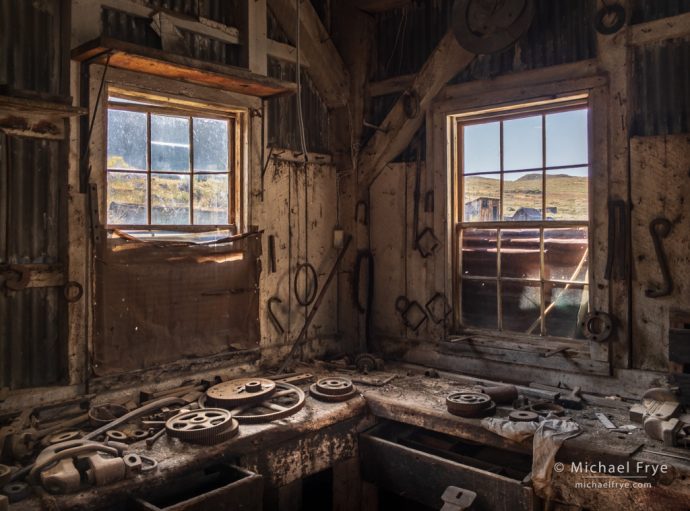
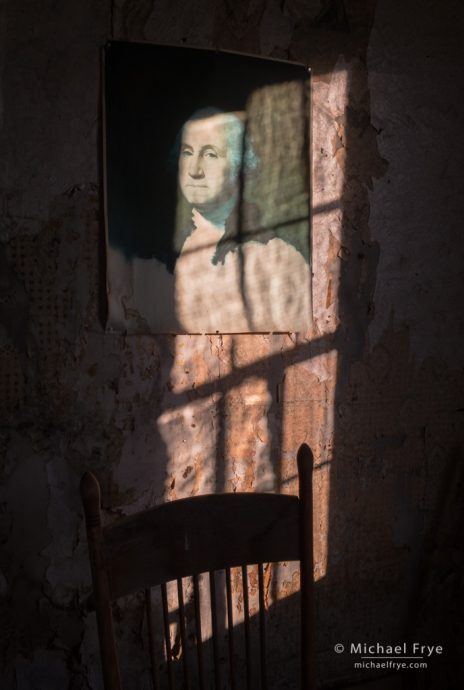
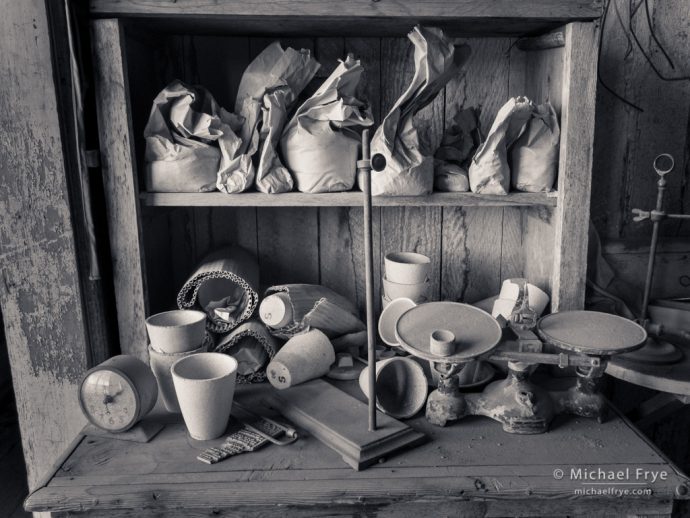
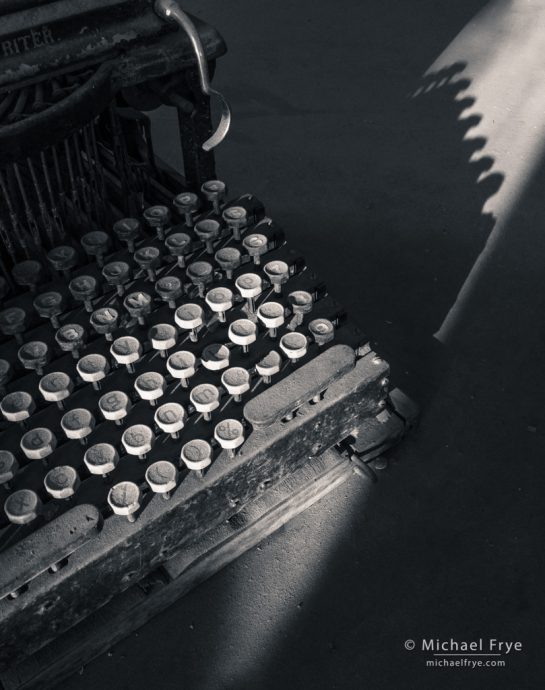
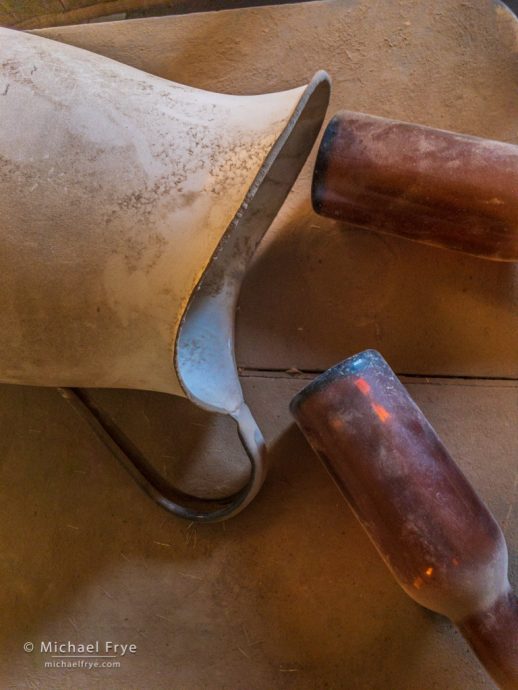
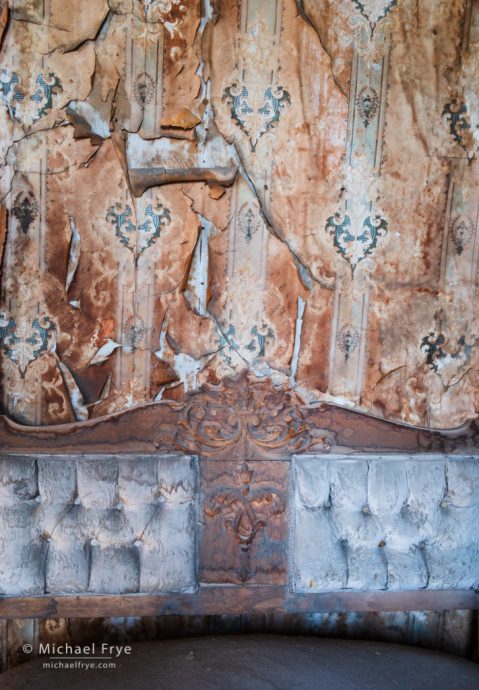
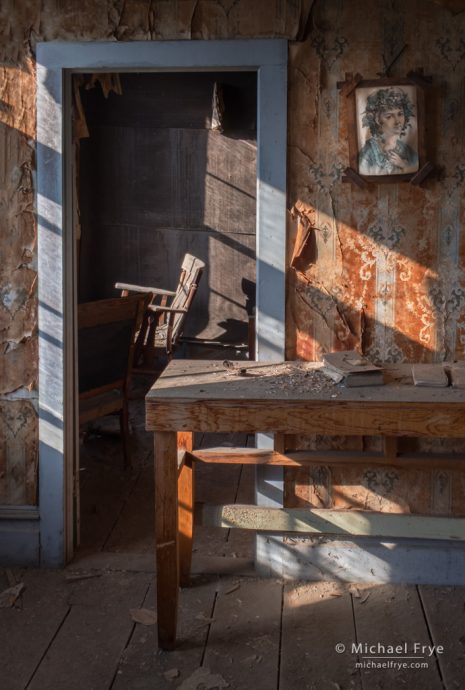








Beautiful images. Thanks or sharing.
Thanks Kearnes!
Very impressive Michael. I’m getting so tired of lugging around a backpack full of gear and tripod in one hand or the other. Age and fitness are catching up with me. 🙂 I’ve started to recognize how impressive some of my iPhone shots are recently. Maybe I should actually put some effort into learning to use it more effectively. Thanks for the reminder. 🙂
Thanks John. Smartphone cameras have their limits, but they have become pretty capable devices, and they’re certainly convenient. Definitely worth learning to use more effectively.
Hello Michael
Been to Bodie a bunch of times but never inside. Your images are beautiful and I love them. Thank you for sharing.
Roger. Evans
Thanks Roger! Going inside is a lot of fun if you get the chance. Most people do so in a workshop, but it is possible to get a permit for yourself or a group of friends if you can get liability insurance and are willing to pay the fees. I think there’s information about the program on the Bodie Foundation website.
I love Bodie! The texture in each photo is remarkable! I love this idea of learning all the ways to use the cameras/software from our cellphones. Is there a class for those of us who have Android phones?
Thanks Ann. Neither Robert nor I would be qualified to teach an Android workshop, since we use iPhones, and the Android and iOS ecosystems are quite different. I’m sure there’s something out there.
Inspiring images! I just bought my first smartphone a couple weeks ago (a Galaxy S9+), so I’m with Ann on wondering about an Android class.
Thanks Bev! Please see my response to Ann.
Beautiful shots! Did you take them in RAW? Did you process them as you would have any other DSLR shot?
Thanks Maricel! Yes, all these were captured in raw format in Lightroom CC, though I sometimes use JPEG in other camera apps that I use for certain purposes (like Slow Shutter Cam). These images were processed in Lightroom CC, and in a pretty similar way to my “big camera” photos, but I do sometimes delve into less-realistic interpretations of iPhone images using other apps.
Excuse my ignorance Michael, but does the iPhone now shoot RAW or are you using a different phone app to somehow achieve that?
Thanks.
The iPhone does shoot raw, but you won’t find that option in Apple’s Camera app, so you have to use a different app. Please see this post:
https://www.michaelfrye.com/2018/04/30/the-camera-in-your-pocket/
Awesome. Thank you. I plan to replace my 6 Plus shortly with the new version of the X. Hopefully there will be more improvements than where I’m at all ready. 🙂
Michael, these photographs are absolutely stunning. I love photographing old places and, as I’m on the East Coast, Bodie is particularly fascinating as somewhere I’ll never likely get to. Thanks for giving us the opportunity to “visit” via your photography. Please can you answer: What is the minimum model of iPhone you consider really worthwhile for photography? Mine is an iPhone 5s, makes nice images for internet sharing but nothing I’d want to print. Thanks!
Thanks very much Nancy. I’d say whenever the iPhone jumped from 8 megapixels to 12. I think that was with the 6S, but maybe it was the 6.
Hi, can you tell me if you have any single day classes in Bodie?
Sorry, no.